How to Rank Higher On Google In 2024 (13 Steps)
Written by Brian DeanIn collaboration with Semrush
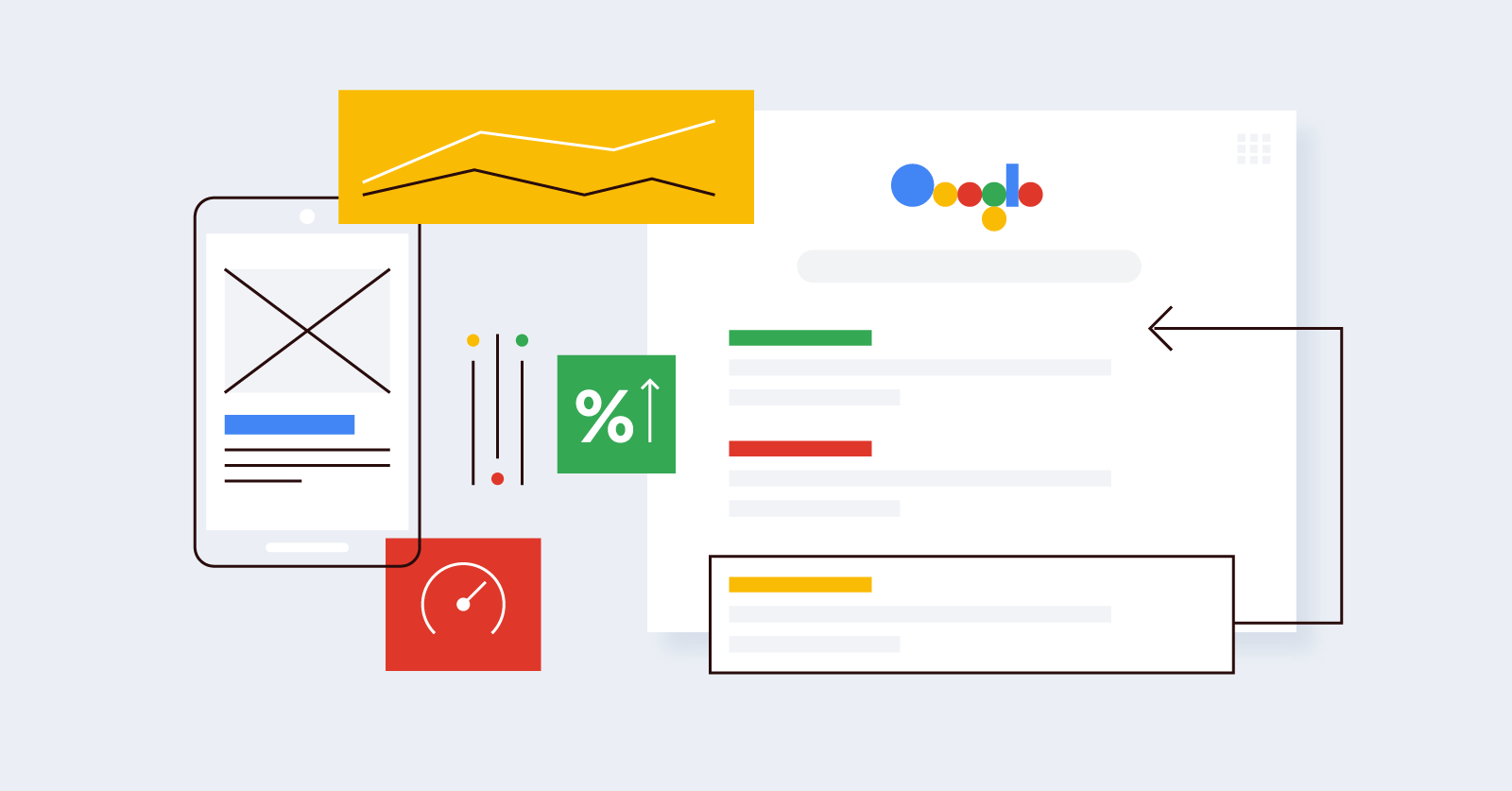
In this post, I’ll show you EXACTLY how to get higher rankings in Google.
In fact, this is the same process I’ve used to rank #1 in Google for “SEO checklist”:

And “link building tools”:

So if you want to rank higher in Google in 2024 and beyond, you’ll love this new guide.
What is Google Ranking?
Google’s ranking metrics are designed to sort out billions of web pages to meet search intent by offering the most relevant and useful results within the shortest time possible.
Domains acquire ranking through Google’s algorithmic process that considers different factors to evaluate the quality, relevancy, and utility of an answer to a search query.
Step-by-Step Guide on How to Rank High on Google
Follow these strategies for increased Google organic rankings.
- Step #1: Improve Your On-Site SEO
- Step #2: Add LSI Keywords To Your Page
- Step #3: Monitor Your Technical SEO
- Step #4: Match Your Content to Search Intent
- Step #5: Reduce Your Bounce Rate
- Step #6: Find Even Keywords to Target
- Step #7: Publish Insanely High-Quality Content
- Step #8: Build Backlinks to Your Site
- Step #9: Track and Monitor Your Results
- Step #10: Include Meaningful Visuals
- Step #11: Make Your Information Skimmable
- Bonus Step #1: Boost Your Click-Through-Rate
- Bonus Step #2: Use Internal Linking
Step #1: Improve Your On-Site SEO
Here’s the truth:
On-Page SEO is one of the FASTEST ways to improve your Google rankings.
That’s because you can optimize your page in about 2 minutes. And start to see a rankings boost within days.
Question is:
How do you optimize your site around your target keywords?
I’ve published a video that outlines pretty much everything you need to know about on-page optimization.
But if you prefer to read, here are the most important on-page tactics to implement right now.
First, make sure that your keyword is toward the beginning of your title tag.
Here’s an example:

This is called “Frontloading” your keyword.
Why is this important?
Well, Google puts slightly more emphasis on terms that show up early in your title tag. And they put less emphasis on keywords that show up later on.

For example, my target keyword on this page is “SEO copywriting”:
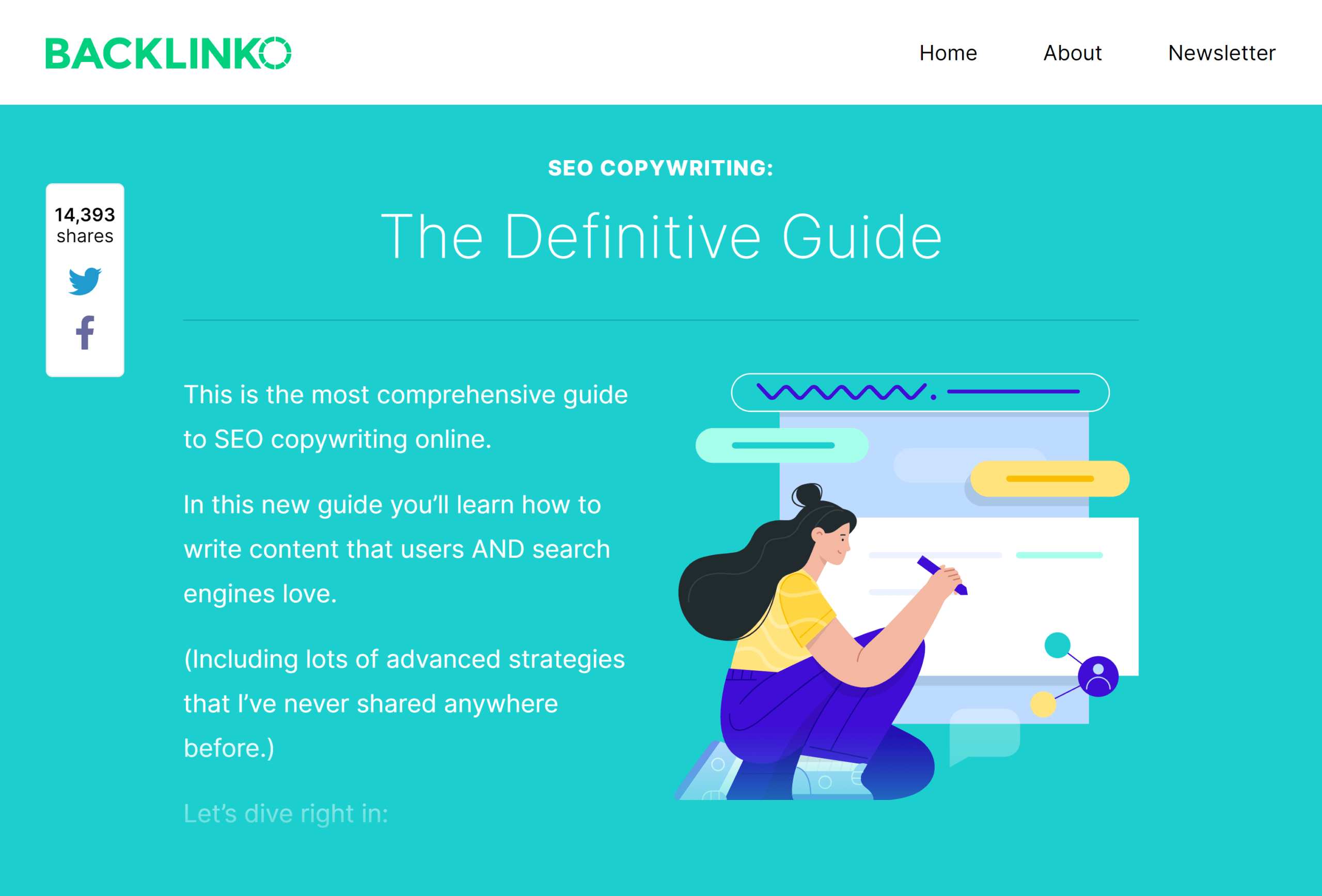
As you can see, my title tag starts off with that keyword.

Second, make your content AT LEAST 1800 words.
Our analysis of Google’s key ranking factors found that the average Google first page result contains 1,447 words.

And I can tell you from experience that longer content does tend to rank best in search engines.
For example, one keyword that we rank #1 for is: “Mobile SEO”. And this is a REALLY competitive keyword.
I’m competing against giant authority sites like Moz, Yoast… even Google!

This is why I made sure my page covered EVERYTHING anyone would possibly want to know about optimizing their site for mobile devices.
In fact, my content is 4,330 total words.

Obviously, there are times when long-form content doesn’t make sense (like for an e-commerce category page). But if you can publish long content you should publish long content.
Finally, add your keyword 2-3x on your page.
This isn’t about keyword stuffing or anything like that.
Instead, when you add relevant terms to your page, you tell Google:
“This page is about this search query!”.
Which can help you get a nice rankings boost.
For example, I recently wanted to improve my rankings for the keyword “squeeze page”.
So I sprinkled that term a handful of times on my page where it made sense.
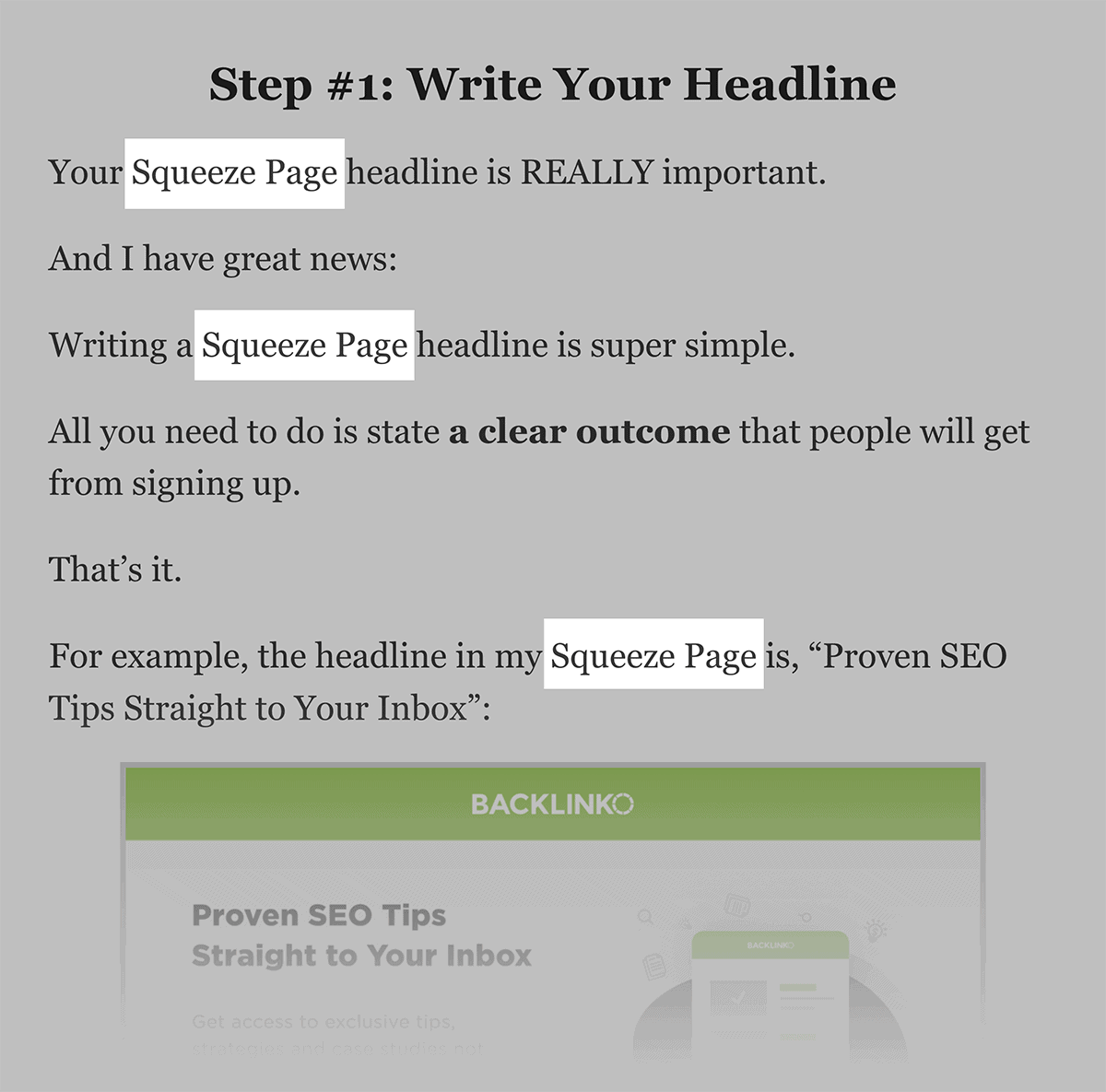
Simple.
This leads us to our second step…
Step #2: Add LSI Keywords To Your Page
LSI keywords are an advanced on-page SEO tactic.
And they’re working GREAT right now.
So: what the heck are LSI keywords?
They’re words and phrases that are related to the topic of your page.
For example, here are some example LSI keywords for the keyword “Cold Brew Coffee”.
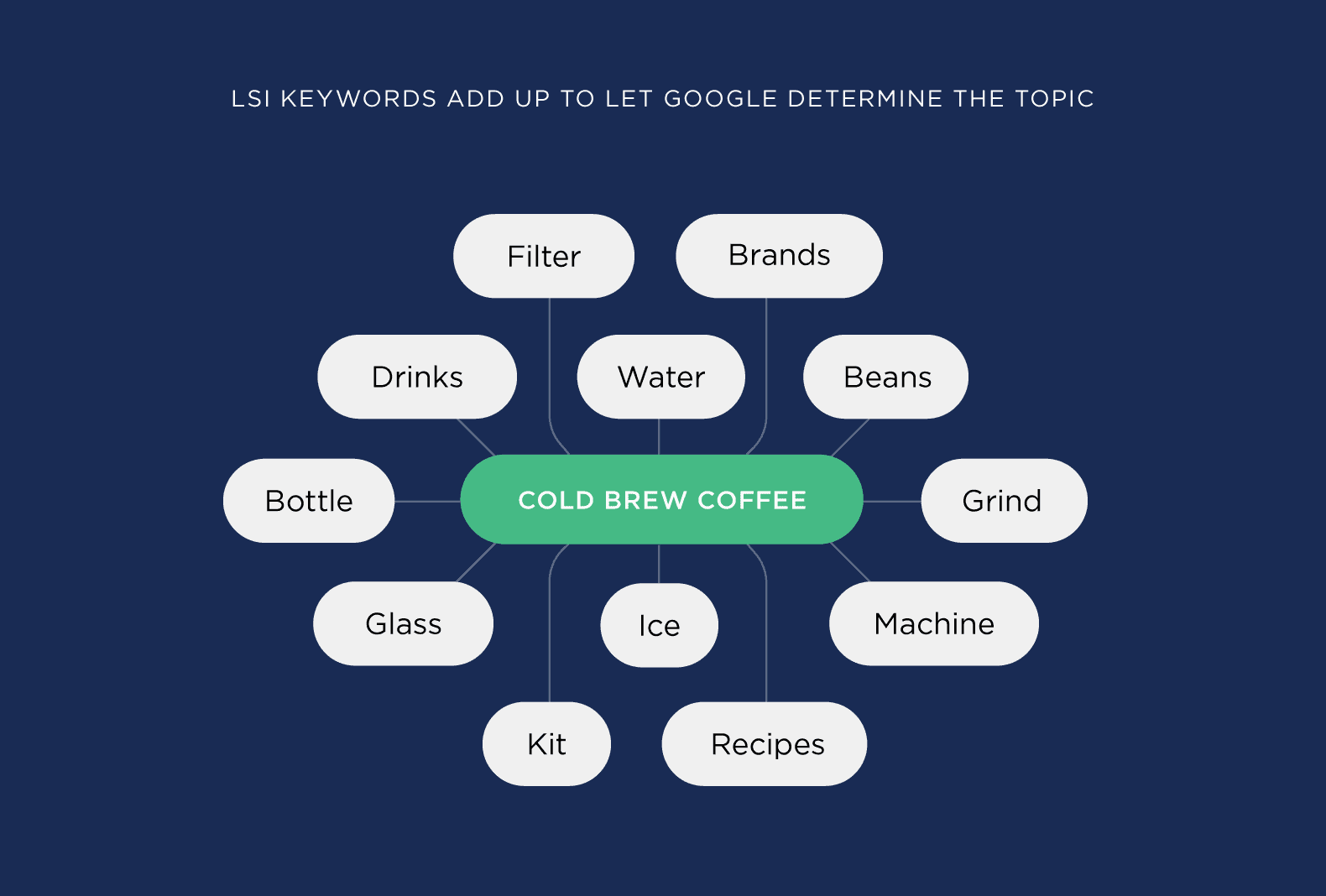
These LSI keywords confirm to Google that your content is actually about that topic.

And, as it turns out, covering an entire topic on a single page is KEY for ranking on the first page of Google.

How do you find and use LSI keywords on your site?
I recommend checking out a free SEO tool called LSIGraph.

All you need to do is pop your main keyword into the tool…

…and it’ll spit out a handful of LSI keywords that you can add to your page.

Nice.
Step #3: Monitor Your Technical SEO
For 90% of the websites out there, technical SEO is NOT an issue.
That said:
Even though they’re rare, technical SEO problems can really hurt your site’s SEO.
So they’re worth paying attention to.
Specifically, here are three things to keep an eye on:
The first thing I recommend is to double-check that your site is 100% optimized for mobile devices.
It’s 2022. So this probably isn’t an issue for you.
But it never hurts to check.
Fortunately, checking your site’s mobile optimization is an absolute cinch.
All you need to do is use plug a URL from your website into the Mobile-Friendly Testing tool from Google.

If you see all green, you’re set.

If not, that’s something you want to fix ASAP.

I also recommend looking to see how quickly your site loads.
It’s no secret that a site’s average loading time is a Google ranking factor.
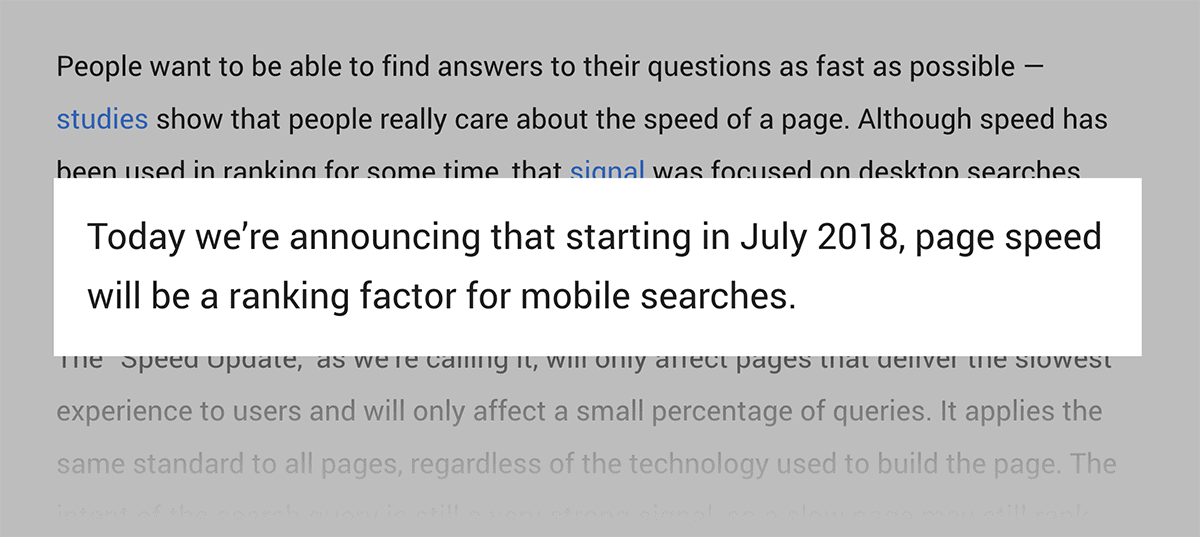
In my experience, Page Speed isn’t a super duper important ranking factor. But it does make a difference.
So go ahead and run your site through site speed tools like WebPageTest.org or Website Checker. They are free and give you a detailed outlook to help clean up any technical issues on your domain.

It’s free and gives you a laundry list of ways you can speed things up.
Next, head over to the Search Console.
And go to “Index” → “Coverage” in the sidebar.
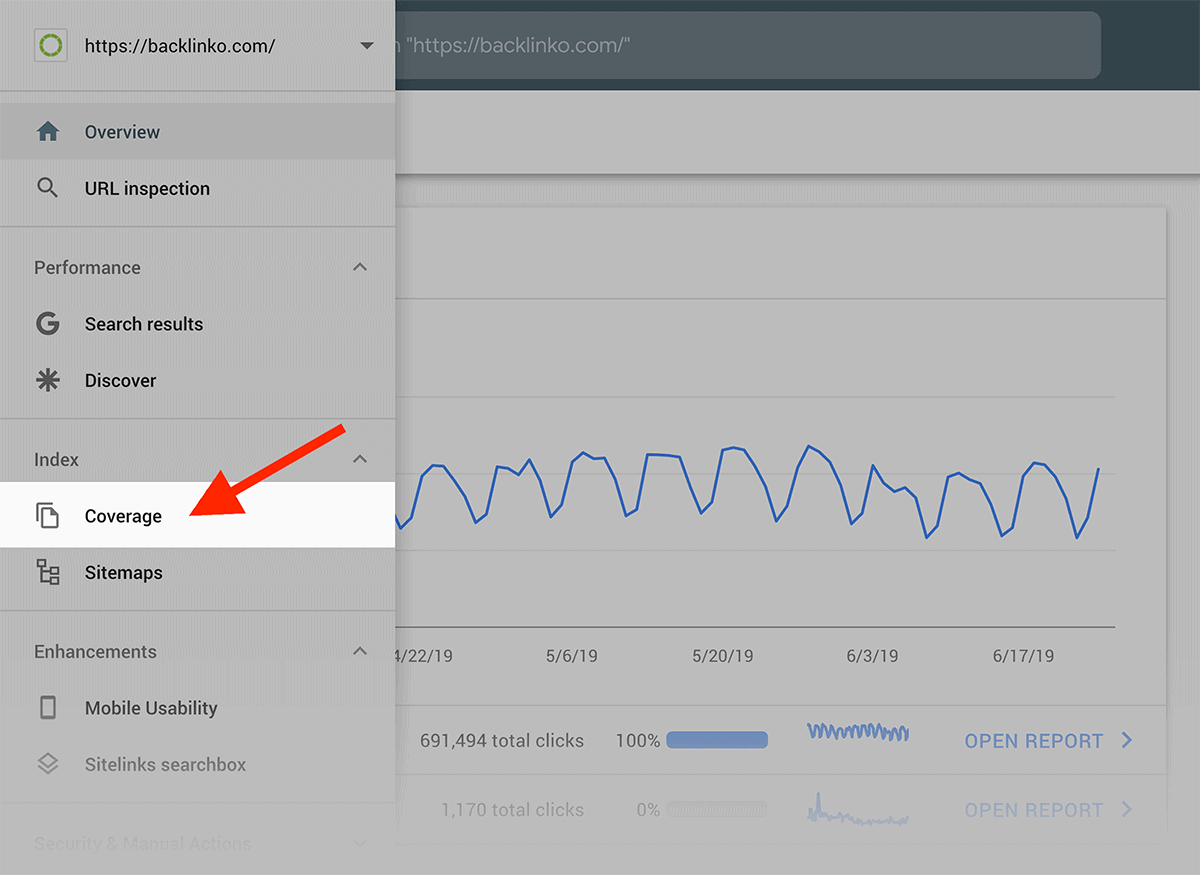
If Google is having trouble indexing your site, they’ll let you know here.

As you can see, I have 1 “Valid With Warnings” error.

Those are no biggie. But they’re worth fixing.
But if you see lots of red “Errors”, that’s something I recommend looking into right away.

Finally, if your site runs on WordPress, I recommend using the Yoast SEO plugin.
Will this plugin magically improve your rankings?
No.
But it can help make your WordPress site SEO-friendly out of the box.

Step #4: Match Your Content to Search Intent
“Search Intent” is the new buzzword in the world of SEO.

And for good reason.
Thanks largely to RankBrain, Google can now figure out if your site is a good fit for a specific keyword.
In other words, Google pays attention to how people interact with your website.
And if people generally get what they’re looking for from your page, you can expect your rankings to improve.

If not, Google will drop your site down a few spots.

The key in this step is to make sure your page gives a searcher EXACTLY what they’re looking for.

Let me explain how this works with a real-life example.
A few years ago I wanted to rank for the keyword “Conversion Rate Optimization”.
So we spent WEEKS working on this giant list of CRO techniques.

At first, the content did really well. It was getting a decent amount of search engine traffic every month.

But over time, Google figured out that people searching for “Conversion Rate Optimization” didn’t want a giant list of techniques.
And, as you can see from this Google Analytics screenshot, organic traffic to that page slowly declined.

So after some time, I decided to figure out what the Search Intent for “Conversion Rate Optimization” actually was.
First, I thought about what someone typing that phrase into Google is looking for.
And I realized that they probably want content that includes:
- A definition of what CRO actually is
- A description of how CRO works
- Examples of CRO in action
- Tips for getting started
Second, I looked at what was already ranking on the first page.
And I quickly noticed that pretty much every result on the first page included all the stuff that my content was missing.

(Mostly in the form of a giant beginner’s guide.)
So I completely reworked my content from scratch.
I turned that list of techniques into Conversion Rate Optimization: The Definitive Guide.

Now that my page matches Search Intent, it now gets 214% more organic traffic than before.

Bottom Line? If you want to improve your Google ranking, your page needs to be a GREAT fit for what someone’s searching for.
When you do, Google will WANT to show your site to more people. Which is why giving Google what it wants is the foundation of any good SEO strategy.
Step #5: Reduce Your Bounce Rate
Our next step is to improve your site’s Bounce Rate.
Why does this matter?
Well, Google doesn’t like to see people landing on a site… and quickly bouncing back to the search results.

This is a clear sign to Google that people aren’t happy. And if users aren’t happy, you can kiss your rankings bye-bye.
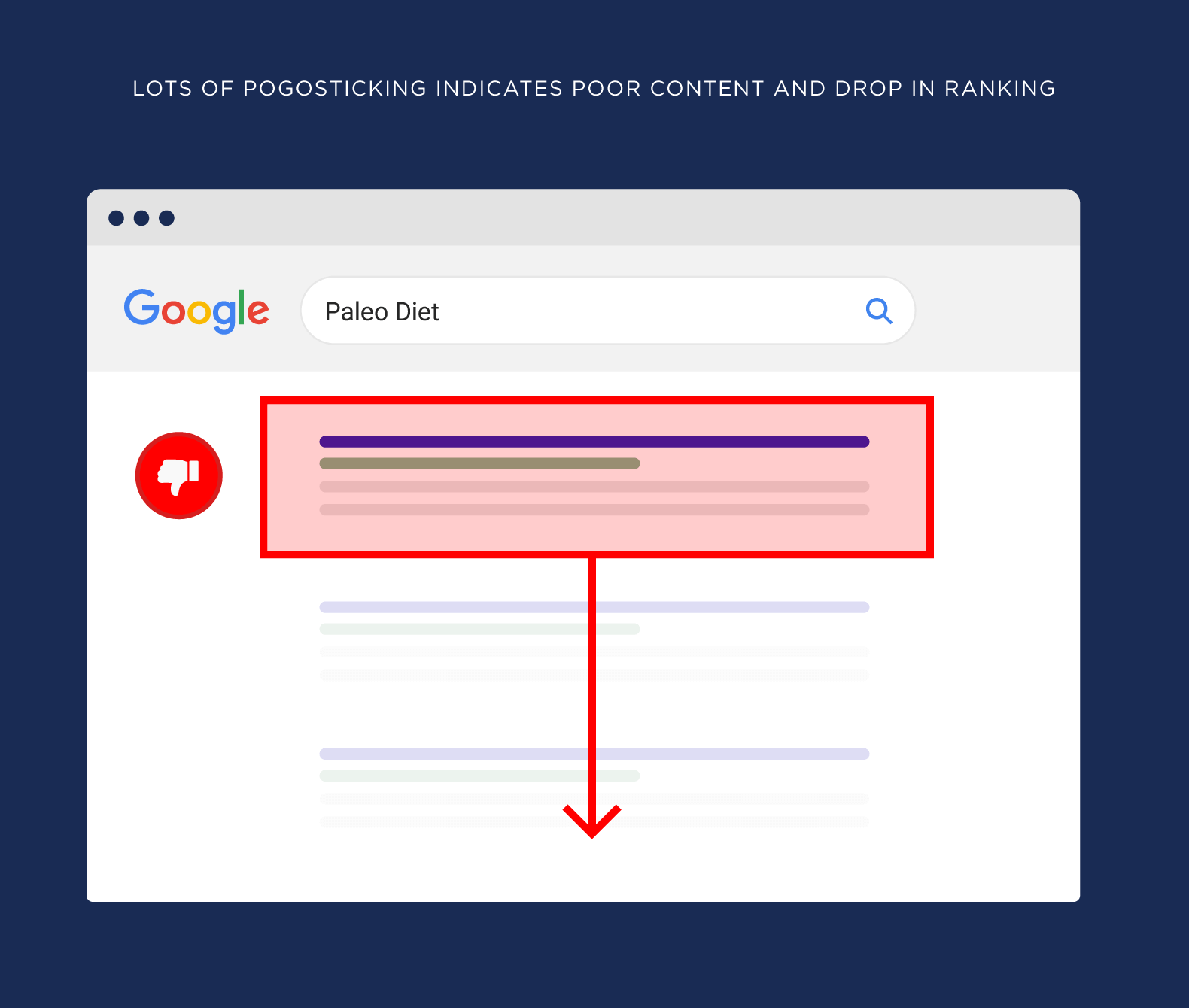
Needless to say, lining up your content with Search Intent is a GREAT way to improve your bounce rate.
After all, you’re giving a searcher what they’re looking for. Why would they bounce?
Besides Search Intent, there are a handful of simple things you can do to improve your site’s bounce rate.
First, I recommend looking at your site’s “Above The Fold” section.
This is the first thing people see when they land on your site.

And in my experience, people decide to bounce or not bounce largely on what they see here.
The #1 thing you can do to improve your above the fold area is to push your content to the top. That way, Google searchers can easily find what they’re looking for.
For example, you can see that my content is at the very top of my page here.

You also want to structure your page so it’s easy for people to find what they’re looking for.
For example, you might have noticed that I added a little table of contents at the top of this page.

That way, people can jump directly to the step that they’re most interested in.
Lastly, add visuals, videos, charts, screenshots, selfies… or any form of visual content you can to your page.
This makes your content more compelling and easier to understand. Both of which can reduce your bounce rate A LOT.
For example, I add dozens of visuals to every single post.

And this helps keep my bounce rate super low.
Step #6: Find Even More Keywords to Target
At this point, you should start to see your site ranking higher in Google.
Now it’s time to get even MORE traffic to your site.
And the easiest way to do that?
Optimize your page around several different keywords.
Here’s the exact process.
First, head over to the Google Search Console’s “Performance on Search results” report.

Next, scan through the queries that you rank for.

You’ll probably recognize most of these because you already optimized your web pages around these exact keywords.
But every now and again you’ll come across a keyword that you’re not optimizing for.
And if you’re ranking for that term by accident, imagine how easy it will be to rank if you actually TRY to rank for it.
For example, I’m getting a little bit of traffic from people searching for “youtube video description example”.

But I don’t have a page optimized around that exact keyword.
Instead, people searching for that keyword are finding this page from my site.

This page INCLUDES an example of a video description.

But it’s not really optimized around that term.
So I’d want to go back to that page and add that exact phrase a few times. And expand on the example a little bit.
I could also create a completely new page optimized around that keyword.
Either way works.
Rinse and repeat this process a few times.
Step #7: Publish Insanely High-Quality Content
You’ve probably heard that to rank in Google “you need to publish high-quality content”.
And while this is true, it’s also super hard to take action on.
(After all, what does “high-quality content” actually mean?)
So yeah, you DO want to publish awesome stuff on your site.
But it needs to be the type of high-quality content that people share on social media… and link to.
That’s because, as you might already know, Google’s algorithm is largely based on backlinks.
The more backlinks your site has, the higher you’ll rank.

And the best way to build backlinks to your site?
Publish content that people will actually link to.
(Also known as “link bait”.)
Here are a few ways to increase the odds that people link to your content.
Become a Data Source
In other words:
Publish something that other people can cite in their blog content.
For example, in 2019. we partnered with Pitchbox for this huge email outreach study.

This post was packed with data, stats and figures. Which is the type of thing that bloggers and journalists LOVE to link to.
For example, one of our findings was that less than 10% of all outreach emails receive a response.

And bloggers and journalists quickly started to cite that stat as evidence that most outreach fails.

Focus on Long-Form Content
I talked a little bit about longer content back in step #1.
Well, as it turns out, longer content is ALSO great for getting links.

While there’s no “perfect” word count for blog posts, content that’s 3k+ words tends to do best when it comes to link building.
Publish Visual Content
I’m talking about stuff like:
- Infographics
- Maps
- Charts
- Flowcharts
- Videos
Visual content is GREAT for getting links.
For example, a while back we published this infographic on our blog.

Yup, we had to do a lot of email outreach to get the word out.
But when we got this infographic in front of the right people, they were happy to embed it on their blog.

Step #8: Build Backlinks to Your Site
Publishing amazing content is great and all.
But for your content to get links people need to actually see it.
In other words:
You can’t just take a “publish and pray” approach to content marketing and HOPE that people link to you.
That’s because your content is a drop in an ocean of blog posts, videos, Instagram stories and Facebook posts that come out every single day.
In fact, WordPress reports that 70 million new posts come out every month.

The takeaway here is that, if you want people to link to your site, you need to actively promote your content.
This video will show you the 9 link building strategies that are working best for me right now.
That said:
You probably don’t need to use all 9 of these to build links.
Instead, I recommend focusing on these 3 techniques:
Get Links Via Dead Links
This is also known as “Broken Link Building”.
To use this strategy, first install the CheckMyLinks Chrome extension.

Then, scan a page that you find for a dead link.

When you find one, email the person that runs that page (usually the author of the content or the website’s webmaster) a personalized version of this email script:
Hi [First Name],
I found a broken link on your page: [title].
It’s the link to [website]. It’s giving me a 404 error.
Also, I recently published a post on [topic]. It might make a nice replacement for the dead link.
Hope that helps!
Guest Posting
Guest posting is a VERY controversial topic in the world of SEO.

And for good reason.
Guest posting definitely can be spammy.
In fact, Google specifically states that large scale campaigns that use “keyword-rich” anchor text links are a no-no.

So as long as you don’t a) make guest posting your #1 link building strategy and b) use keyword-rich anchor text in your backlinks, you’re set.
For example, here’s a guest post that I published on the SEMRush blog.

This was published on another site in my niche (search engine optimization). So a big checkmark there.
And it was one of two guest posts that I published that month. That’s far from “large scale” guest blogging.
Also, my link back to my site didn’t contain any keywords.

So all in all, this guest post would be considered A-OK in the eyes of Google.
Resource Pages
Resource pages are GREAT for link building.
That’s because resource pages are pages that someone created to link to the best stuff on a given topic.
For example, I have a resource page designed to help people quickly learn SEO.

And this page links to helpful content about keyword research, content and more.

So if you had an outstanding resource about SEO, I might consider adding it to that page.
Step #9: Track and Monitor Your Results
So at this point, you should start seeing your site rank higher on Google than before.
Which is great.
But how do you know if those rankings are doing anything for you?
Also:
How do you keep tabs on your SEO results without manually checking your rankings every hour?
That’s what this step is all about. In this step, I’m going to show you how to track your results like a pro.
Google Analytics “Organic Traffic”
Rankings are great and all. But when it comes to measuring the results of SEO marketing, NOTHING beats organic traffic.
(In other words, traffic that comes directly from search engines.)
That’s mostly because rankings can be deceiving.
In fact, one industry study found that ranking #1 in Google isn’t all it’s cracked up to be.

They found that the top-ranking page in Google doesn’t always get the most traffic.

How is this possible?
First, organic CTR.
I’ll talk MUCH more about that in the next step.
But as a quick overview, the #2 result in Google sometimes gets more clicks than the #1 result.
And if you can double your organic click-through rate, you just doubled your traffic from that keyword.

Second, a single page can rank for THOUSANDS of different keywords.
Let’s say you rank #1 for keyword A. And your competitor ranks #2 for that same term.
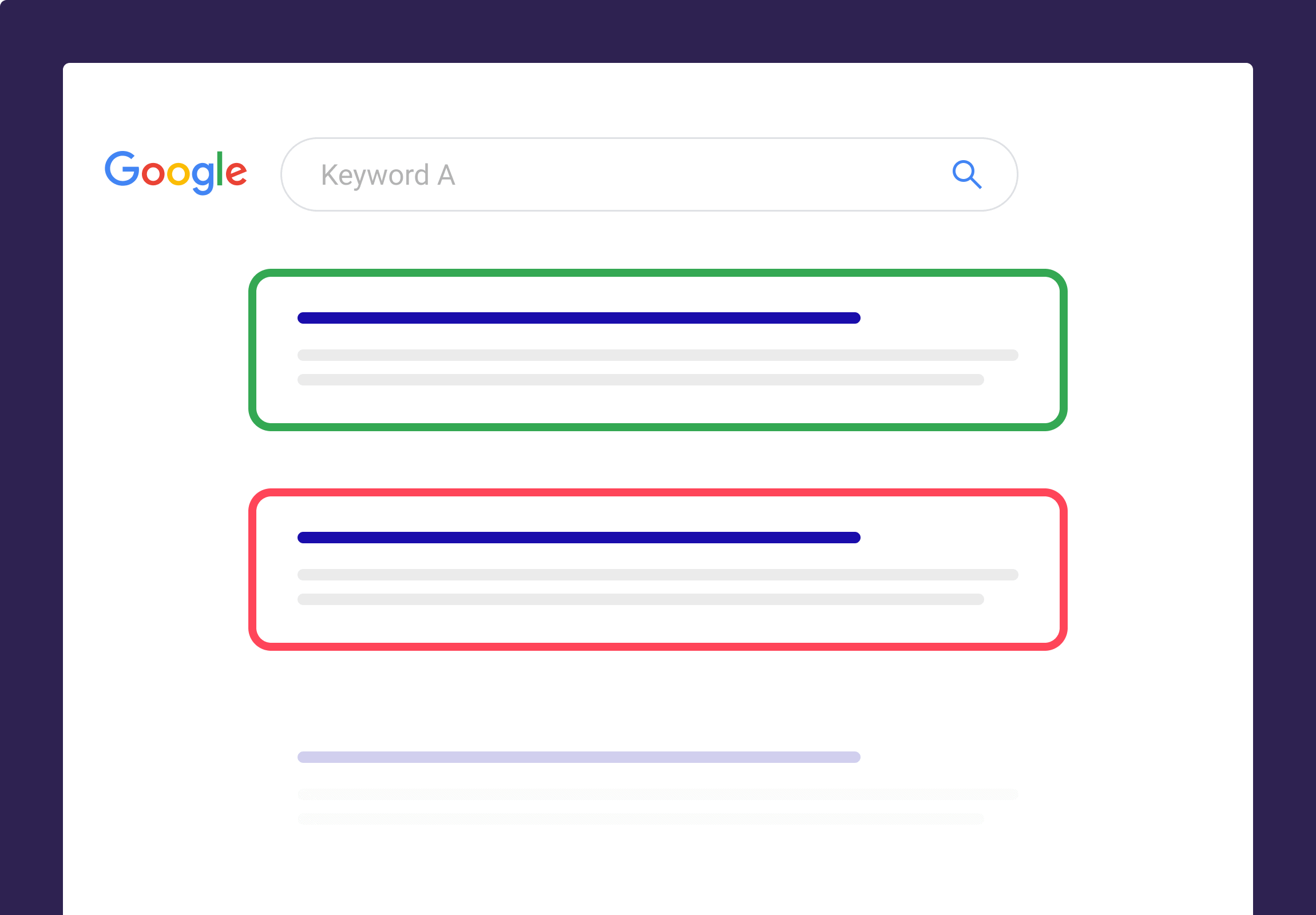
But your competitor ranks #1 for keywords B, C, and D.

Because they rank for more keywords, they’ll probably get more Google traffic than you.
In short: tracking your Google rankings has its place. But the gold standard of SEO tracking is organic traffic.
Google Search Console “Impressions” and “Clicks”
This is a nice complement to the Google Analytics organic traffic report we just talked about.
This report in the Search Console basically shows you how many people SAW your site. And how many of those people CLICKED on your site.

As you might expect, the more people that see and click on your site from Google, the better.
Leads and Sales
In other words: is this influx of traffic actually adding to the bottom line?
This is a question that people gloss over. But if you want to get a huge ROI from SEO, you need to know if all these new visitors are turning into customers.
There are a million and one ways to track this. But my favorite is the Goals feature in Google Analytics.
In fact, that’s what we use here to see which pages are generating the most email subscribers for us.

Step #10: Include Meaningful Visuals
SEO goes beyond using well-chosen keywords and adhering to Google’s Core Web Vitals requirements but rather blends high-quality content with accompanying aesthetics to help trigger and capture user attention.
Images help in the following ways:
- Clarification of Comparison
For instance, to show how traffic peaked over a specific season, you can use charts, graphs, or any appropriate infographic to present the information. - Brand Protection from Copyright Violation.
Backlinko has a team of graphic designers complimenting content presentation efforts by integrating quality brand images. These images create awareness about our domain, products, and services making them easily recognizable even on social media. While such visuals promote brand awareness, they also provide GREAT opportunities to build backlinks by asking for credits. Sometimes Google provides featured snippets with text from one website but images from a second website. A rich result positively boosts your traffic and allows your site to win a featured snippet.
- Silent Moves.
Brands have gone viral for sharing memes and gifs resonating with people. Use niche-specific keywords while sharing your images, and adhere to standard protocols such as reduced file size. Good visuals easily go viral and bring massive traffic without making a sound!Brian's Pro Tip: Niche Context and Relevance
In some instances, Google interprets visuals as the most suitable form of meeting search intent. Queries such as ‘How to …’ tend to tap into video content, and get rewarded with higher rankings. Research thoroughly to suitably adapt depending on the niche.
Step #11: Make Your Information Skimmable
A Hubspot study on website engagement found that, on average, people spend 54 seconds on a web page.
Do you know what this means?
You’ve got less than a minute to make an impression on your website visitors. Despite people spending more time online, there’s lots of information to consume and only the best results attain engagement.
To stick out, use precise, understandable sentences. Write in active voice, embrace the use of bullet points, and subheadings to break the text into easy-to-read chunks. Lastly, don’t forget to add visuals to further appeal to the site users.
See more ACTIONABLE tips on how to further improve your website rankings.
Bonus Step #1: Boost Your Click-Through-Rate
It’s no secret that Google uses click-through rate in their algorithm.
In fact, several studies (like this one) have found a correlation between “Expected CTR” and Google rankings.

Put another way:
The higher your organic CTR, the higher you’ll generally rank.
That’s because a high CTR tells Google that your page is what searchers are looking for.
And they’ll boost your page’s rankings to make it easier for people to find.

Here are a few simple ways you can get more clicks:
- Use Emotional Title Tags: In other words, titles that stand out. Here’s an example:

- Use Short, Descriptive URLs: These are good for SEO in general. But they also help Google searches see your page as a great fit for their search.

- Rich Snippets: Rich Snippets (like stars) really help your site stand out in the SERPs.

- Compelling Meta Descriptions: Your meta description should “sell” your page.

Bonus Step #2: Use Internal Linking
Want an easy way to improve your Google rankings?
Use internal linking.
In other words:
Link FROM one page on your site TO another page on your site.

And unlike backlinks, you can use exact-match anchor text in your internal links.

For example, I’m currently low on the first page for the term “Google Search Console”.

And considering how many people search for this keyword every month, even moving up one spot could make a huge difference for me.

So to increase the odds that this page ranks, I add an internal link to that page whenever I mention the Google Search Console.

Rinse and repeat for all of your high-priority pages.
Why is it Important to Rank High on Google? Top 5 Benefits
It’s achievable and highly beneficial to rank high on Google and other search engines. These are the top five benefits of ranking high on Google:
- Get more organic clicks
Statistically, top search results acquire an average CTR of 27.6%. Additionally, the number one result for a search query is 10x more likely to get a click. - Reduced Marketing Costs
Inbound marketing takes time as it involves building durable relationships with customers by tailoring content and information relevant to potential leads. As a digital marketer, inbound marketing takes time, and potentially low returns per lead. Higher Google rankings significantly reduce the time and resources needed to reach a bigger pool of leads while complementing your social media marketing efforts. - A Positive Business Reputation and Image
High organic traffic endorses a brand’s image by communicating trust and quality in a product/content to both existing and potential clients. In short, the top ranking indicates trustworthiness, relevance, utility, and credibility. - Boost Business Authenticity
Ranking on top means clients interact with your products, services, and information. From a psychological and marketing point, a reputable brand brings acceptance based on authentic relations from interactions with the website visitors. - Competitive Edge in the Market
Bigger traffic numbers bring more sales, better conversions, and overall brand awareness over rivals.
Conclusion
So I hope you enjoyed my step-by-step guide to ranking higher in Google.
Now I’d like to hear what you have to say:
Which technique from this guide are you going to try first?
Are you going to start internal linking?
Or maybe you want to improve your organic CTR.
Either way, let me know by leaving a comment below right now.
Frequently Asked Questions
Does Google prefer fresh content?
Freshness is a ranking factor only for pages targeting time-sensitive and trending topics such as seasonal festivities. IF recency adds little or no value to the search query, no amount of additional content will help you outrank an older but authoritative result.
How long does content take to rank on Google?
Operating from the premise that your content is quality and relevant to the industry, plus your website is fully optimized for search engines, it can take anywhere from 2 to 6 months for the content to rank. However, the period may be longer than 12 months if there is stiff competition and a lack of a fully optimized website.